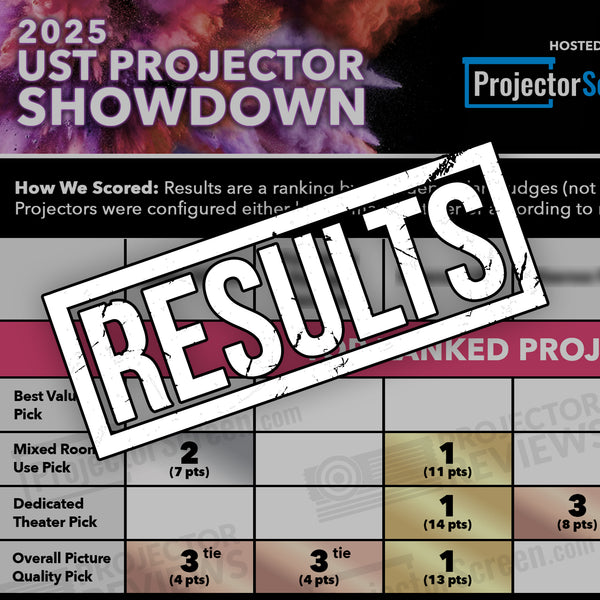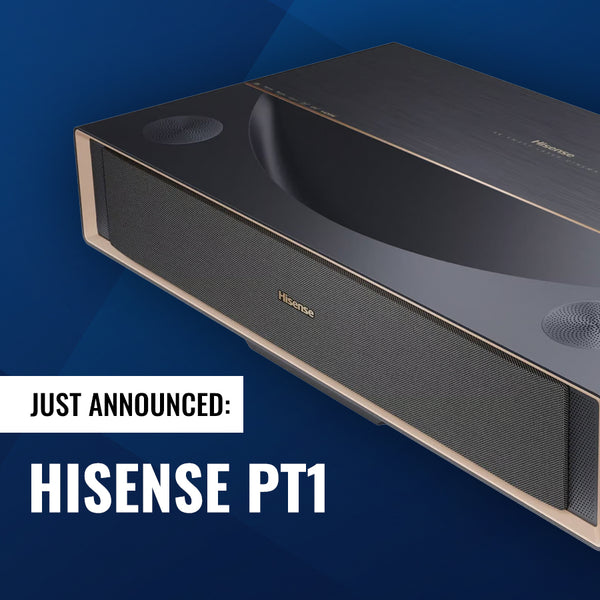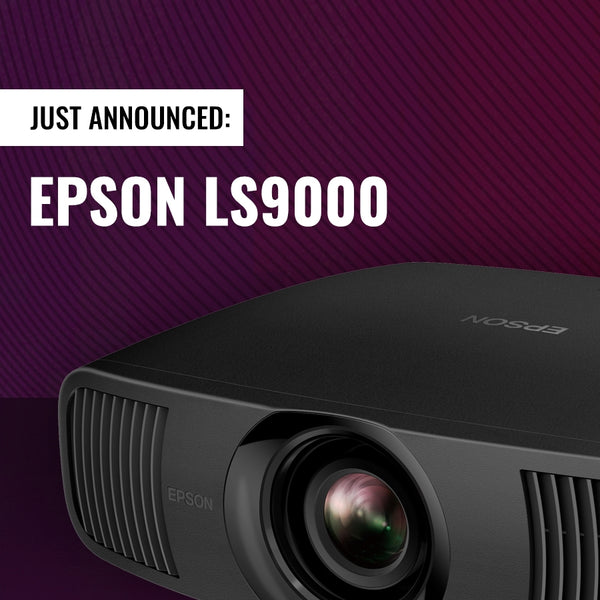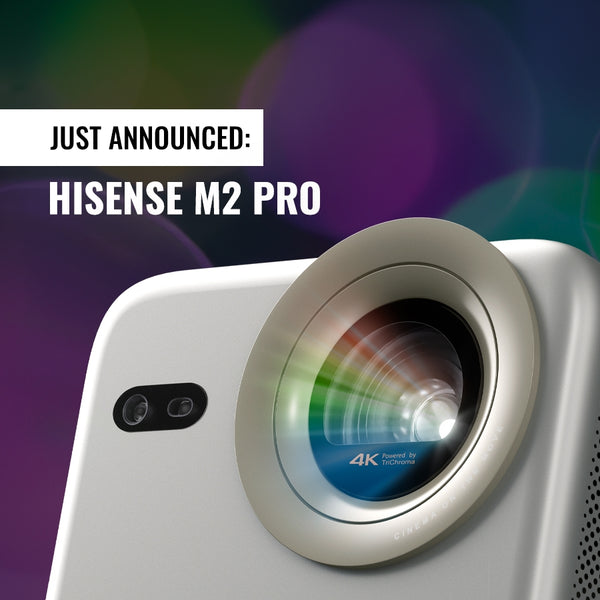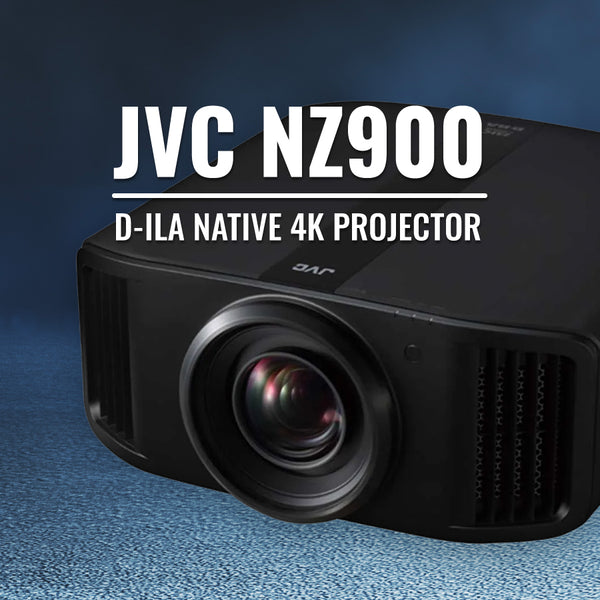Projector Resolution Explained – Everything You Need to know

Nowadays, a projector has become an integral part of entertainment and presentations as it provides outstanding clarity and quality in various screen sizes. To project a high-quality image, a digital projector needs a resolution, and without it, there wouldn’t be anything on the screen to see, just a blob of light.
Basically, projector resolution defines the number of pixels needed from top to bottom and side by side to create an image. It is an essential aspect of any projector because it lets you get high-quality visuals with optimum clarity and vividness.
What Is A Pixel?
A pixel is the smallest unit of a digital image or graphic that can be displayed and represented on a digital display device. Each pixel represents a sample of an original or synthetic image. When put together these pixels make up the picture you see on the screen. More pixels typically result in a more accurate and sharper representations of the original image.
What Is The Best Resolution For A Projector?
The best projector resolution option varies from user to user as different cases have different requirements. So we have created this detailed guide that will help you to get an in-depth idea about resolution and make a proper decision.
Here we will discuss various aspects related to resolution, but we will try to clear all your confusion regarding this topic.
What Is Projector Resolution?

Projector resolution is the number of pixels available on the screen or the number of pixels a projector is capable of showcasing in a projected frame.
In layman’s terms, it describes how much clarity and quality you will get when a projector projects an image on the big screen. At a time, a digital projector can accommodate from thousands to millions of pixels in a particular screen, and the amount of pixels defines the resolution of the projector. It is mostly denoted by the multiplication of its pixel count on the horizontal side and vertical side.
An HD resolution technically offers 1280 by 720 pixels of resolution, while a full HD resolution offers around 1920 by 1080 pixels of resolution. Here 720 and 1080 denote the vertical height while 1280 and 1920 define the horizontal width. Like in any camera where the megapixel count determines the quality of the image.
Similarly, in the projector, the higher the pixel count, the higher will the resolution on the screen, and invariably it will result in better sharpness and detailing in the image.
The visual performance of a projector is primarily based on the resolution it produces, and the higher the resolution the better the output will be. However, when you go for a lower resolution, not only the image gets blurry and pixelated but also loses quality a lot faster when projected on a large projector screen.
Even though resolution is a vital factor that determines overall image quality, factors like aspect ratio, brightness, contrast ratio, color, and projection also play an important role. You will be surprised to know that projector resolution is not limited to famous figures like 1080p, 720p, 4K, or 8K. There are different types of resolutions beyond the popular resolution choices.
Different Projector Resolutions




Projector resolution comes with different choices, and different resolutions have diverse applications in various sectors. 720p, 1080p, and 4K resolution are primarily associated with entertainment projector, while SVGA, XGA, or WUXGA are mostly found in projector related to business or educational presentations.
So it is vital that you should know about the projector resolution before buying a projector that will meet your requirement.
Here we have provided brief overviews of all the most common projector resolutions, both current and outdated:
WVGA
WVGA or wide video graphics array resolution is a standard resolution option that is mostly found in some low-budget and portable projectors. They have 800 pixels by 480 pixels figures, which produces a pretty awful image quality in any larger screen size.
It serves as a widescreen resolution for a projector where it works with an aspect ratio of 5:3. This resolution type is suitable for users who don't care at all about image quality and just want entertainment at an affordable budget. This format is mostly outdated and hard to find.
SVGA
SVGA is an old resolution standard that has 800 pixels on the broader side and 600 pixels on the short side. It is abbreviated as Super Virtual Graphics Array resolution that is mostly associated with a projector offering a 4:3 aspect ratio. SVGA is basically an upgrade of WVGA resolution and mostly available with low-range projectors.
If you have a small room and only want to watch video clips as well as provide a presentation, then this resolution can be a good choice at a low budget. A significant drawback of this resolution is the squared image output that makes it not much suitable for movies or games.
XGA
Extended graphics array resolution is a well-known resolution choice that is widely available in many projectors. Many experts consider it as a successor of the SVGA standard as it offers better clarity, sharpness, and color quality than the former.
It comes with a great resolution figure of 1024 X 768 that not only treats with outstanding sharpness but also fine clarity. It might come with a 4:3 aspect ratio, but it gives you excellent image quality for a decent home theater experience. These projectors generally lie in the budget rate and do come with a decent hardware list.
720p HD
Short for high definition resolution, is known to almost everyone because it serves as a base standard for many modern entertainment devices. It is also known as an HD Ready resolution that offers 1280 pixels on the longer side and 720 pixels on the shorter side.
The best part of this resolution is that it can accommodate almost one million pixels to render out average image quality. It still serves as a native resolution for many older and low budget home theater projectors, and they are mostly available in the lower-price range. Since it is meant for entertainment and gaming, it follows the 16:9 aspect ratio.
WXGA
WXGA might not seem like a familiar name, but you will be startled to know that it is a standard resolution for many entry-level projectors, especially business projectors. It is known as a wide extended graphics array that offers you a resolution of 1280 pixels by 800 pixels, which amounts to a total pixel count of 1,024,000.
It is a widescreen resolution option that comes with a 16:10 aspect and holds the ability to display HD as well as full HD visuals with proper quality. It would be a suitable resolution for your projector since it maintains a sweet spot between 720p and 1080p images.
1080p FHD
FHD or full HD resolution is currently the most resolution choice in the entertainment segment. It is a 1920 X 1080 pixel resolution that is utilized by most of the home theater and gaming projectors in the market. It is based on a 16:9 widescreen aspect ratio that matches all the high-resolution broadcast and Blu-ray formats.
The image quality 1080p projectors on offer is simply fantastic, and all the displays have sharp clarity and high color fidelity. Users who are looking for an immersive home theater experience often go for this resolution as these projectors are available in a decent price range. Many people feel that this is the best projector resolution for low budget home theaters.
SXGA
SXGA is an uncommon projector resolution that is abbreviated as a super-extended graphics array. It has 1280 pixels on the width and 1024 pixels on the height, thus giving almost similar image quality as FHD resolution.
SXGA serves as a better option than WXGA and produces excellent sharp and bright images. However, it doesn’t have a fixed aspect ratio and works with both 5:3 and 4:3 formats.
Very few projectors come with this resolution, and they are mostly used in commercial places for presentation or notice display.
WUXGA
Widescreen ultra extended graphics array is a top-notch projector resolution that offers crisp and realistic color visuals. In technical terms, it offers a resolution of 1920 X 1200 pixels at a 16:10 widescreen aspect ratio.
You may not find its application in satellite programs, movies, or games, but it can run native full HD content at its optimum quality. It is mainly present in widescreen gaming monitors and business projector used for commercial applications.
The number of WUXGA projectors in the market has quickly grown to replace the other 16:10 formats often used in presentations. While the price point of this resolution projector is typically on the higher side, which is a deal-breaker for some people but if you're presenting information the sharpness this format provides is mandatory.
UXGA
UXGA, which stands for ultra extended graphics array, is almost similar to WUXGA as they both offer 1920 pixels on the long side and 1200 pixels on the short side. Unlike WUXGA, it works with a 4:3 aspect ratio and serves as the highest quality projector resolution in this aspect ratio format.
A great thing about this resolution is that it can be utilized for both entertainment and commercial works as it offers top-notch detailing.
The sharpness it brings out in the 4:3 format is really great and doesn’t fade in any screen size. However, like WUXGA, they are expensive and limited in numbers.
4K UHD
4K UHD is currently the best resolution for home theater projectors and gaming projectors that are readily available in the market. It has quickly become the popular choice for everyone as it delivers top-of-the-line image quality with realistic colors.
Whenever you watch movies, tv-series or play games, it reels you in an immersive visual experience. 4K resolution projectors usually offers 3840 pixels by 2160 pixels at a 16:9 aspect ratio, meaning you get more detailing and clarity than most popular resolution options.
However, some native 4K projectors also come with 4096 X 2160 resolution at 17:9 aspect ratio, but you will hardly find them in the market. Besides native 4K resolution, some projector uses a pixel-shifting technique to produce 4K alike video from full HD content, but they can’t match the true 4K resolution.
Although it is increasingly getting popular, you still can expect to pay more than $1000 to own a 4K Projector.
8K
Besides all these resolutions, you will also find 8K resolution projector in the market nowadays, but they are on the expensive side like the JVC NZ7. The number of 8K projector is really low, but a number of new 8K models are in the development stage.
There is only a handful of 8K contents available in the market, and they are mostly found on YouTube. However, these 8K projectors can upscale 4K content giving it more detail and sharpness. If you want to get the absolute best picture currently available and futureproof your investment, consider buying an 8K projector. (Just make sure you also have a textureless 8K cinema screen or you won’t be realizing the full potential of your device)

10K+
Some manufacturers are also planning to introduce a 10K projector but with no expected date of arrival. However at this current moment in time, if you are planning to go for extremely high resolution for a cinematic visual experience, then 4K would be more than ideal for most movie lovers.
Projector Resolution Cheat Sheet
Resolution |
Pixels Horizontally |
Pixels Vertically |
Total Pixels |
|---|---|---|---|
Video Resolution (4:3 aspect ratio) |
|||
| SVGA | 800 | 600 | 480,000 |
| XGA | 1024 | 768 | 786,000 |
| SXGA | 1400 | 1050 | 1,470,000 |
| UXGA | 1600 | 1200 | 1,920,000 |
Widescreen Resolution (16:10 aspect ratio) |
|||
| WXGA | 1280 | 800 | 1,024,000 |
| WXGA+ | 1440 | 900 | 1,296,000 |
| WUXGA | 1920 | 1200 | 2,304,000 |
Widescreen Resolution (16:9 aspect ratio) |
|||
| 720p | 1280 | 720 | 921,600 |
| 1080p | 1920 | 1080 | 2,073,600 |
| 4K Ultra HD | 3840 | 2160 | 8,294,400 |
| 8K Ultra HD | 7680 | 4320 | 33,177,600 |
Widescreen Resolution (17:9 aspect ratio) |
|||
| 4K | 4096 | 2160 | 8,847,360 |

Native Vs Maximum Resolution
While going through the projector’s specifications and reviews, many buyers often get confused between the native resolution and the maximum resolution offered by the projector. Many people might have wondered why these two resolutions are different.
Well, to put it in a simple manner, native resolution tells you the actual pixel count while maximum resolution tells you the high signal resolution that your projector can display.
All the projector uses a display chip like DLP, LCD, or LCoS and all these chips come with a fixed array of pixels that they can accommodate. This fixed array of pixels is commonly known as a native resolution because it highlights the actual physical resolution that the projector is capable of producing. Basically, it depicts the true potential of a projector in terms of resolution.
If a projector comes with a native 1920 X 1080 pixel resolution, then it can’t display more real pixels on the screen. It is an important factor that every buyer should emphasize because it lets you assess a projector’s performance.
Many projectors boast of offering full HD or 4K visuals, but not all of them will play them in actual resolution. So by checking their native resolution, you can evaluate whether the projector is capable of playing true full HD or 4K content to give you the optimum visual experience you are expecting.
There are some cheap brands that often advertise themselves providing full HD resolution at an affordable price, but in reality, they offer a native resolution of WVGA or SVGA.
On the other hand, maximum resolution tells you the highest incoming resolution that your projector is capable of processing and displaying. It is not related to the projector’s native resolution, and many of the projectors have the ability to play higher resolution content than their actual resolution. This results in a lower resolution image and not the same as the original format.
The maximum resolution threshold assists the projector in recognizing different video signals coming with a variety of resolution formats.
When a projector has an HD native resolution, it doesn’t mean it can only play up to HD. The maximum resolution is often capped at full HD or WUXGA, meaning it has the highest signal resolution of 1200p, and it can process any incoming signal up to WUXGA resolution.
In a simple manner, when there is a mismatch in the resolution of the content with that of the projector’s native resolution, the projectors opt for scaling.
During the scaling process, the projector makes adjustments to the content so that it can match the native resolution. If HD content is played in a full HD projector, then the projector will expand the signal to match the display.
However, if you play HD content in an SVGA projector, then it will compress the signal. During the scaling, the projector can’t add more details, so it processes the frames in such a way that it looks almost similar to the incoming signal without losing much detail.
Previously scaling engines weren’t highly capable, but nowadays, things have changed, and modern engines can make incoming signals similar to native resolution. However, you should remember that no matter what type of scaling your projector offers, you are going to lose some details.
4K Projector Screens Vs 4K Ready
In order to get the best image possible from your projector you’ll want to use a cinema screen. One of the reasons you want to use a projector screen is that it will give you a truly flat surface to display your content. We’ve got a whole article here explaining why you should use a 4K projector screen with a UHD projector. In essence it can be summed up like this: the smoother the projection surface, the sharper your image will be. With 4K projection the pixels are very tiny but if the screen isn’t textureless the pixels are going to be distorted. That means your ultra high definition picture won’t properly render and your image won’t be as sharp as it should be.
If you go on sites like Amazon or Best Buy, you’ll see a good number of screens that claim to be “4K Ready”. What does this mean? Basically it means that you can shine a projector on them. But you can point a projector at any surface making it by definition “4K Ready”. By that logic, a polar bear is “4K Ready”!
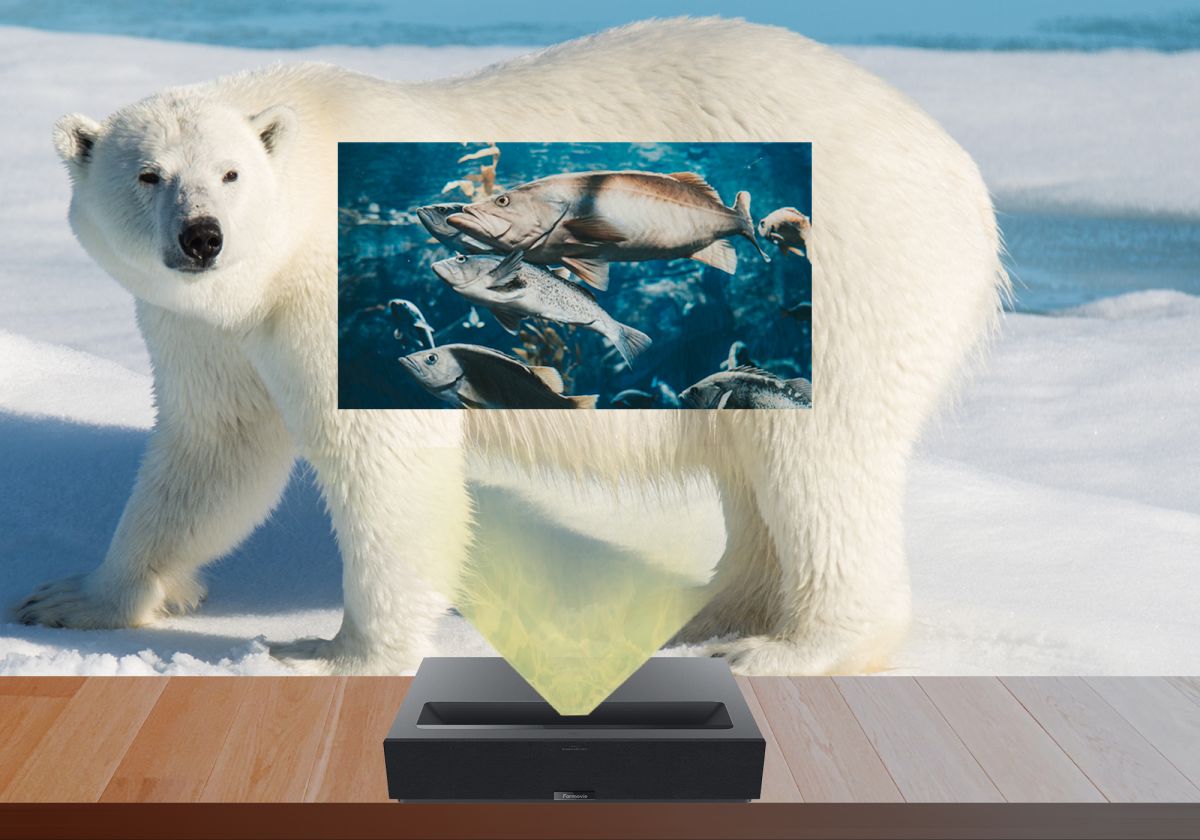
These “4K Ready” screens aren’t textureless, the overall image quality, particularly in terms of sharpness and clarity, will be compromised.
True 4K projector screens are meticulously crafted with a smooth projection surface, precisely engineered to complement the capabilities of 4K projectors. This smooth surface is essential for maintaining image integrity and minimizing any distortion, ensuring that viewers can experience the full depth and detail of 4K content without any interference.
Factors To Consider When Choosing A Projector Resolution
Choosing a projector resolution might seem like an easy task, but there is a lot more to it than meets the eye. You will have to look beyond the resolution and also consider various factor to get the best visual experience:
Usage
The first thing you need to consider when choosing the projector resolution is the usage of the resolution. Whether you want to utilize it for home entertainment or use it for conducting presentations in the office and classroom.
Different resolutions have different usages, so you need to be careful while choosing. You can’t expect a home theater projector to provide you with an excellent presentation with high clarity in text and vivid data images. If your main priority is home entertainment, then you should stick to a resolution like HD, Full HD, or 4K.
However, for business and education usage, you get a lot of options for projector resolution. Starting from SVGA, WXGA, full HD to 4K, you can choose any option depending upon your requirement.
Aspect Ratio

When you are about to choose the resolution of your projector, you also must consider the projector’s aspect ratio you want to get. Not all projector resolutions will offer you the same aspect ratio as some offer 16:9 while others offer 16:10 and 4:3 format. The vast majority of new digital projectors are either 16:9 or 16:10. If you are going for full HD or 4K projector resolution, then you will have 16:9 as your native format.
Many projectors only offer a single aspect ratio format, even for the highest signal resolution. However, they often have options that let you choose the aspect ratio of the projected image. But this is done using black bars around your content to achieve the desired screen format.
Aspect Ratio Vs Resolution
Resolution and aspect ratio are two distinct but interconnected concepts in the realm of digital media, particularly in images and videos. Resolution refers to the number of pixels contained in an image or video, usually denoted by the width and height in pixels (e.g., 1920x1080). Aspect ratio, on the other hand, describes the proportional relationship between the width and height of an image or video.
While resolution determines the level of detail and clarity, aspect ratio influences the overall composition and visual presentation. Both factors play essential roles in shaping the viewing experience and ensuring that media content is displayed accurately and effectively across different devices and platforms.
Screen Size You Will Use
The projector screen size you want to use might not seem like an essential factor in the first place, but you should never forget to consider it. The screen size you want to get will partly influence the resolution you want in your projector.
If you want to watch movies using a maximum 40 inch screen size, then there is no point in going beyond full HD resolution if you’re sitting further than about 10 feet. Your eyes can’t really pick up the difference at such a small screen size. Watching 4K and full HD on a small screen will look the same to you, and you would hardly find any difference. (Though if you put them side by side you will notice a significant difference in sharpness from the higher resolution projector.)
However, if you are going for large screen entertainment, then it would be justified to get full HD or 4K resolution as you will get fine detailing even at a 120 inch screen.
Similarly, if you plan to provide a presentation primarily within a small screen, then it would be wise to get SVGA, WXGA, or XGA resolution as they will get the job done.
However, SVGA or XGA won’t cut it if you plan to provide a presentation in ample space. When going beyond 100 inch screen size, it would be smart to go for WUXGA, Full HD, or 4K, depending upon your preferences.
What Resolution Is Film?
Unlike digital images, which are made up of discrete pixels, film captures images through a chemical process on a light-sensitive emulsion coating. As such, film resolution is often described in terms of its ability to resolve fine details, typically measured in line pairs per millimeter (lp/mm).
The resolution of film can vary depending on several factors, including the type of film used, the format of the film (such as 35mm or medium format), the quality of the lens used to capture the image, and the technique used in developing and processing the film. Higher-quality films and lenses, as well as meticulous processing techniques, can result in greater resolution and finer detail in the final image.
One of the unique characteristics of film is its ability to capture a wide dynamic range, meaning it can record both bright highlights and deep shadows with detail and nuance. This dynamic range contributes to the overall perception of detail in a film image, even if the resolution measured in lp/mm may not be as high as some digital formats.
Film resolution has been a benchmark of image quality for decades, with professional photographers and filmmakers often opting for film for its rich tonality, fine detail, and timeless aesthetic. Even in the digital age, where high-resolution digital cameras are ubiquitous, film continues to hold its own as a medium capable of capturing stunningly detailed images with a unique character and depth.
Summing It All Up
Resolution is probably one of the most critical factors that every shopper should check when they decide to buy a projector. Whether you want to use the projector for entertainment, presentation, or gaming purposes, getting a high resolution is always the best way to go. Not only do you get high pixel count but also outstanding detailing and sharpness.
However, it's not easy to choose what is truly the best projector resolution for business and school presentations as well as entertainment as there are a lot of factors. We hope through our guide we have been able to help you in deciding which resolution will cater to your requirement.
Ranging from SVGA, XGA to HD to 4K resolution, we've highlighted all the details to help you figure out exactly what you're looking for in a projector. We've even given you the differences between native and maximum resolution so that you don’t get swayed by the manufacturer advertising tricks.
Now that you understand projector resolutions you can go out and shop for a projector and screen.
And as always, keep on projecting!

